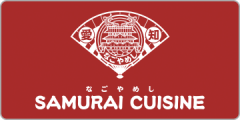- Home
- Sightseeing Spots
Sightseeing Spots
1 - 20 / 66 RESULTS
-
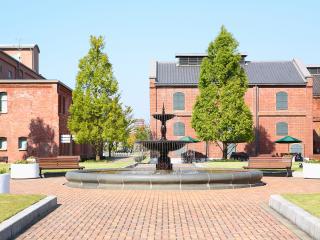
Nagoya Station
Noritake Garden
Opened in commemoration of the 100th year anniversary of the pottery and ceramics maker Noritake. In this premises filled with lush greenery, you can tour a pottery and ceramics factory and museum displaying the Noritake of the good ol' days, as well as paint on patterns for yourself. You can also enjoy shopping for dishes and other tableware in the Noritake-operated store. There is also a restaurant, cafe, and more using Noritake dishes. All buildings are wheelchair accessible. See More
Opened in commemoration of the 100th year anniversary of the pottery and ceramics maker Noritake. In this premises filled with lu…See More
-
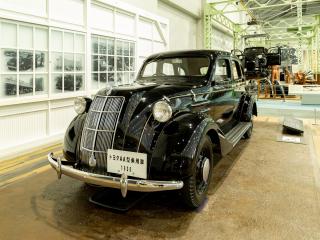
Nagoya Station
Toyota Commemorative Museum of Industry and Technology
Established by the Toyota group, this museum preserves and uses a factory building used during the Taisho era (1912–1926) which still remains in the birthplace of the Toyota group as an industrial heritage. Within its walls are the Textile Machinery Pavilion and Automobile Pavilion, where you are introduced to and can easily learn about shifts in technologies of the industry, mainly with textile machinery and automobiles the Toyota group has been involved in, through dynamic displays as well as machine demonstrations by operators. Enjoy a full day here with the additional museum shop, restaurant, cafe, and library. See More
Established by the Toyota group, this museum preserves and uses a factory building used during the Taisho era (1912–1926) which s…See More
-

Sakae / Fushimi
Nagoya City Science Museum
A science museum equipped with NTP Planet, one of the world's largest planetarium domes, with an inside diameter of 35 meters. Along with an exterior design that features the dome's spherical shape, the museum has four large-scale exhibits, including an aurora film viewed in a -30° room and a nine-meter tall man-made tornado. In addition, the building itself acts as an exhibit through its use of solar power and green walls, visible earthquake-resistant structures and elevator mechanisms, and more. See More
A science museum equipped with NTP Planet, one of the world's largest planetarium domes, with an inside diameter of 35 meters. Al…See More
-

Sakae / Fushimi
Nagoya Touken World Sword Museum
Hommachi-dori Street in the Sakae area was constructed as a means to commute between Nagoya Castle and Atsuta Jingu Shrine just as the castle was being built at the beginning of the Edo period. More than 400 years later and the metropolis of Nagoya as we now know it owes much of its culture to this road. Nagoya Touken World—or the Nagoya Sword World—came to be in this very area in the Nagoya Touken Museum as a homage to the rich local history. Nagoya Touken World displays numerous ancient swords, armor, and other wartime memorabilia as well as important cultural properties in the present day as proud pieces of Japanese culture. Transcend time and space in the world of Japanese weaponry at Nagoya Sword Museum along Hommachi-dori Street in Nagoya's bustling Sakae area—host to both a rich history and the future to come. See More
Hommachi-dori Street in the Sakae area was constructed as a means to commute between Nagoya Castle and Atsuta Jingu Shrine just a…See More
-
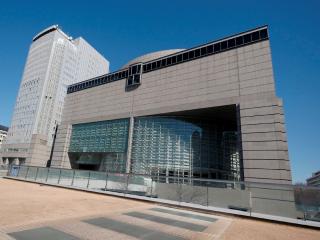
Sakae / Fushimi
Aichi Arts Center
Adjacent to Oasis 21, Aichi Arts Center is a consolidated art and culture complex composed of several key facilities. One of these is Aichi Prefectural Museum of Art, which has a collection of approximately 8,000 works, while another is the Aichi Prefectural Art Theater, with a main theater, a concert hall, and a mini theater, distinguishing it as one of the largest in the prefecture. There are also art spaces that can be used for lectures, exhibitions, and conferences, an art library where documents related to the arts are collected and made available to the public, a restaurant, an art shop, and more. See More
Adjacent to Oasis 21, Aichi Arts Center is a consolidated art and culture complex composed of several key facilities. One of thes…See More
-

Sakae / Fushimi
Yamatoe Museum Morimura Memorial Hall
The "Yamatoe Museum Morimura Memorial Hall" introduces the flow of the Yamatoe painting style that originated in the Owari region from the late Edo period. It aims to familiarize citizens with the Yamatoe, which depicts scenes of the four seasons in traditional Japan. The museum also serves as a relaxing spot in the city center, offering special exhibitions relevant to the current times. On the first floor of the museum, there is a cafe where visitors can enjoy a beverage. Additionally, the museum offers classes in Japanese painting (Yamatoe), tea ceremony, calligraphy, and flower arranging. The facility strives to be a place of cultural exchange and appreciation for traditional arts and serves as a hub for the community's leisure and cultural activities. See More
The "Yamatoe Museum Morimura Memorial Hall" introduces the flow of the Yamatoe painting style that originated in the Owari region…See More
-
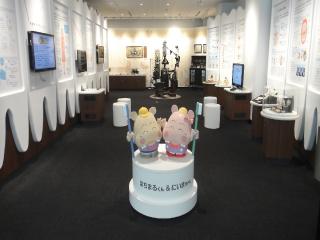
Sakae / Fushimi
Dental Museum
The Dental Museum was opened in 1989 to promote better understanding of oral hygiene and there are few such museums in Japan. Visitors can enjoy rare experiences including seeing an ancient examination room and checking their knowledge of oral hygiene. See More
The Dental Museum was opened in 1989 to promote better understanding of oral hygiene and there are few such museums in Japan. Vis…See More
-
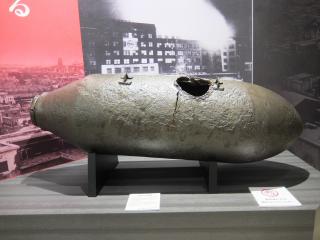
Sakae / Fushimi
Aichi-Nagoya War Memorial Museum
The "War Memorial Museum" is a place where visitors can contemplate war through actual materials collected from local residents. The museum exhibits real artifacts related to war, donated by citizens and residents of the prefecture and city. Groups can also arrange guided tours with explanations by museum staff if they make reservations at least 30 days in advance. If you're interested, feel free to inquire about it. The Aichi Prefectural Government Otsu Bridge Annex Building, where the museum is located, is a historically significant structure completed in 1933. You can admire the architectural features of that era, such as the popular scratch tiles and intricate plaster decorations. See More
The "War Memorial Museum" is a place where visitors can contemplate war through actual materials collected from local residents. …See More
-
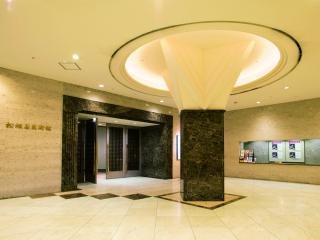
Sakae / Fushimi
Matsuzakaya Museum
Located in the south wing of Matsuzakaya Nagoya in Sakae, downtown of Nagoya. The museum that you can drop while at shopping. Though, this museum does not have its own collection, but instead be held a series of high-quality exhibitions of paintings, crafts, and other works from Japan and abroad. See More
Located in the south wing of Matsuzakaya Nagoya in Sakae, downtown of Nagoya. The museum that you can drop while at shopping. Tho…See More
-
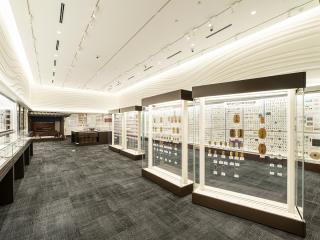
Sakae / Fushimi
MUFG Bank Money & Ukiyo-e Museum (Formerly MUFG Bank Money Museum)
With the aim of contributing to society by preserving cultural properties and educating the public about them, this museum owns around 15,000 rare coins and bank notes and 1,800 ukiyo-e woodblock prints which are put on public display. The money exhibition room displays rare coins and notes from Japan and various countries around the world, including the world's oldest currency in the form of Shang dynasty cowrie shells. The Japanese currency features a gold coin called "Tensho Oban" whose production was ordered by Hideyoshi Toyotomi as well as Edo period currency and printing blocks, few of which are extant today. See More
With the aim of contributing to society by preserving cultural properties and educating the public about them, this museum owns a…See More
-

Sakae / Fushimi
The Electricity Museum
This museum has an exhibition room where visitors can learn all about electricity, the environment and energy. The Ohm theater is where interesting experiments help teach the mysteries of science. Patrons can play fun games using their own faces. This participation-oriented museum allows anyone to see, touch and experience science. See More
This museum has an exhibition room where visitors can learn all about electricity, the environment and energy. The Ohm theater is…See More
-

Sakae / Fushimi
Yamazaki Mazak Museum of Art
This museum allows you to gaze over the 300-year history of French art from the 18th to 20th century with French Rococo to Ecole de Paris painted pieces, Art Nouveau glasswork and furniture pieces represented by Emile Galle, and more. ・Easy access, directly connected to Exit 1 of Shinsakae-machi Station on the subway Higashiyama Line ・Many Rococo paintings, including works by Marie Antoinette's personal painters ・The galleries are decorated with chandeliers and wallpaper that turn them into 18th century salons ・Free audio guides available See More
This museum allows you to gaze over the 300-year history of French art from the 18th to 20th century with French Rococo to Ecole …See More
-

Sakae / Fushimi
Aichi Prefectural Museum of Art
Aichi Prefectural Museum of Art opened in 1992 on the 10th floor of the Aichi Arts Center. The museum collects international and domestic art works from the early 20th century to the present which are shown at permanent collection exhibitions. In addition, temporary exhibitions are held periodically based on various art movements or artists. See More
Aichi Prefectural Museum of Art opened in 1992 on the 10th floor of the Aichi Arts Center. The museum collects international and …See More
-

Sakae / Fushimi
Nagoya City Art Museum
A modern building designed by famous architect Kisho Kurokawa, this art museum houses a collection of about 8,500 works that are continually on display including École de Paris artists such as Modigliani, works from Mexican Renaissance, contemporary art, and local Japanese artists. See More
A modern building designed by famous architect Kisho Kurokawa, this art museum houses a collection of about 8,500 works that are …See More
-
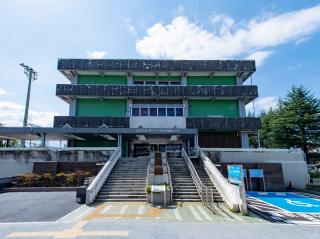
Northern Area
Metawater Nagoya Sewerage Science Museum
In 2020, the Metawater Nagoya Sewerage Science Museum underwent a renewal, transforming into an even more captivating facility with an increase in interactive games and models. It now offers a wide range of experiences for visitors. The museum serves as a public relations facility to help people of all ages, from children to adults, easily understand the mechanisms and significance of the sewerage system, which plays a crucial role in citizens' daily lives. By incorporating interactive games and models, the museum has made the sewerage system more easily understandable and enjoyable for visitors to learn about while having fun. See More
In 2020, the Metawater Nagoya Sewerage Science Museum underwent a renewal, transforming into an even more captivating facility wi…See More
-

Northern Area
Shidami Kofungun Experience Museum
Approximately 200 tumuli were constructed in Nagoya with a third of them (66) confirmed in Kamishidami, Moriyama-ku; and seven--known as the Shidami Kofungun (Shidami Tumulus Group)--are designated national historic landmarks. The Shidami Kofungun occupies a narrow range of 1.7 km from east to west and 1 km from north to south, consists of tumuli built from the beginning of the Kofun (tumulus) period to its end, and is one of the rarest clusters of tumuli in all of Japan. The Shidami Kofungun Historical Area has been maintained to preserve the tumuli. The Shidami Kofungun Historical Area is something like a true-to-life encyclopedia in which you can actually walk around tumuli seeing their various characteristics and differences by the period they were built such as shape and size. The Shidami Kofungun Experience Museum (known as "SHIDAMU" for short) opens in the Shidami Kofungun H… See More
Approximately 200 tumuli were constructed in Nagoya with a third of them (66) confirmed in Kamishidami, Moriyama-ku; and seven--k…See More
-

Eastern Area
The Tokugawa Art Museum
An art museum of important artifacts from the Owari Tokugawa family, including items inherited from Tokugawa Ieyasu This art museum has a collection of more than 10,000 feudal lord implements, starting with items that once belonged to Tokugawa Ieyasu, and items treasured by the first head of the Owari Tokugawa family, Yoshinao (Ieyasu's ninth son), and his descendants. The museum is proud to hold nine National Treasures, including the Illustrated Scroll of The Tale of Genji, 59 important cultural properties, and many other high quality treasures that have been preserved in good condition. The main hall is registered as a national tangible cultural property. See More
An art museum of important artifacts from the Owari Tokugawa family, including items inherited from Tokugawa Ieyasu This art m…See More
-

Eastern Area
Nagoya University Akasaki Institute
The Akasaki Institute was built to commemorate the research achievements of Distinguished Professor Isamu Akasaki, promote original and cutting-edge scientific and technological research at Nagoya University, and contribute to society at large. The exhibition room on the first floor is free to enter and open to the public. On display are a 160-inch LED display, traffic lights and mobile phones using blue light-emitting diodes, Professor Akasaki's research achievements, and experimental equipment. In addition, you can see an official replica of the Nobel Prize medal awarded to Professor Akasaki and Professor Hiroshi Amano in 2014, as well as the same equipment that Professor Akasaki donated to the Nobel Museum. See More
The Akasaki Institute was built to commemorate the research achievements of Distinguished Professor Isamu Akasaki, promote origin…See More
-

Eastern Area
Nagoya University 2008 Nobel Prize Exhibition Hall
This exhibition hall was opened to commemorate the 2008 Nobel Prize in Physics awarded to Dr. Toshihide Masukawa and Dr. Makoto Kobayashi, both graduates of Nagoya University, and the 2008 Nobel Prize in Chemistry awarded to Dr. Osamu Shimomura, a former assistant professor at the same university. It displays official replicas of Nobel Prize medals and numerous explanatory panels on Nobel Prize research, allowing visitors to get up close and personal with the research that led to the Nobel Prize. It also introduces some of the research and educational styles of the Shoichi Sakata Laboratory (Elementary Particle Theory Laboratory, commonly known as "E-Lab"), which produced Dr. Masukawa and Dr. Kobayashi, and the Yoshimasa Hirata Laboratory, which trained Dr. Shimomura. See More
This exhibition hall was opened to commemorate the 2008 Nobel Prize in Physics awarded to Dr. Toshihide Masukawa and Dr. Makoto K…See More
-
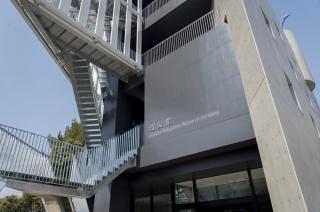
Eastern Area
Nagoya University Disaster Mitigation Research Building
Nagoya University’s Disaster Mitigation Research Building is a base for the realization of a disaster-mitigating society through collaboration between industry, academia, government, and the private sector. It is the university's first seismically isolated building and is equipped with self-powered and solar power generation equipment. In normal times, it serves as a place for cutting-edge research into disaster prevention and mitigation as well as a learning space open to the public. Should a large-scale disaster occur, it acts as a base for disaster response by the university and local area. In addition, it is equipped with a ground monitoring system as well as an experimental facility that reproduces large-amplitude, long-period seismic shaking, and the entire building serves as a place for the development and testing of architectural earthquake-resistance technology. See More
Nagoya University’s Disaster Mitigation Research Building is a base for the realization of a disaster-mitigating society through …See More







